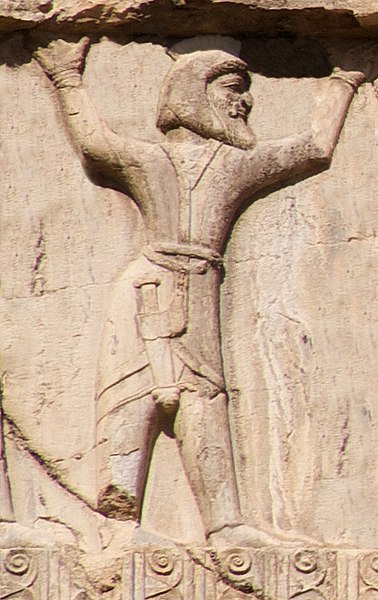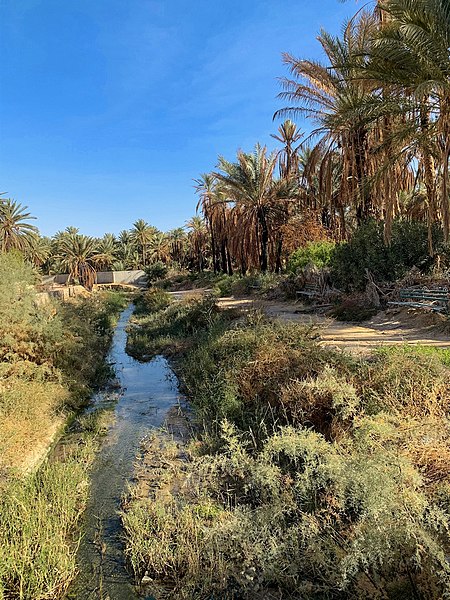Khwarazm or Chorasmia is a large oasis region on the Amu Darya river delta in western Central Asia, bordered on the north by the (former) Aral Sea, on the east by the Kyzylkum Desert, on the south by the Karakum Desert, and on the west by the Ustyurt Plateau. It was the center of the Iranian Khwarezmian civilization, and a series of kingdoms such as the Afrighid dynasty and the Anushtegin dynasty, whose capitals were Kath, Gurganj and—from the 16th century on—Khiva. Today Khwarazm belongs partly to Uzbekistan and partly to Turkmenistan.
Chorasmian fresco from Kazakly-Yatkan (fortress of Akcha-Khan Kala), 1st century BC-2nd century AD.
Chilpyk Zoroastrian Tower of Silence (Dakhma), 1st century BC – 1st century AD
Xerxes I tomb, Choresmian soldier circa 470 BC.
Koi Krylgan Kala fortress (4th-3rd century BC)
In ecology, an oasis is a fertile area of a desert or semi-desert environment that sustains plant life and provides habitat for animals. Surface water and land may be present, or water may only be accessible from wells or underground channels created by humans. In geography, an oasis may be a current or past rest stop on a transportation route, or less-than-verdant location that nonetheless provides access to underground water through deep wells created and maintained by humans.
The desert oasis city of Jubbah in Saudi Arabia as photographed from space.
Irrigation canal within the Figuig Oasis in eastern Morocco
Oasis in Oman
Djerid Oasis, Tunisia








